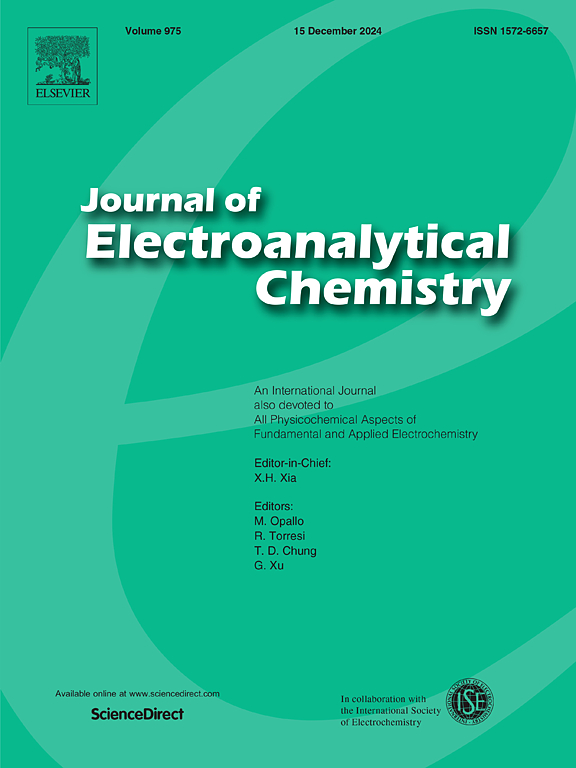Highly efficient and durable Ce-CoPWO composite catalyst on nickel foam for water splitting via one-step electrodeposition
IF 4.1
3区 化学
Q1 CHEMISTRY, ANALYTICAL
引用次数: 0
Abstract
A Ce-CoPWO catalyst supported on a nickel foam substrate was successfully synthesized via a simple one-step electrodeposition method. The catalyst exhibited remarkable electrocatalytic performance in both hydrogen evolution reaction (HER) and oxygen evolution reaction (OER). For HER, it achieved an overpotential of only 44 mV at a current density of 10 mA·cm−2, while for OER, the overpotential was 224 mV. In the overall water-splitting reaction, the catalyst delivered a current density of 10 mA·cm−2 at a cell voltage of 1.491 V, demonstrating high catalytic efficiency. The outstanding performance is attributed to the synergistic effects of its unique composite structure, which includes a nanospherical cluster morphology that provides a high electrochemically active surface area and the combination of the Keggin structure of PW12 nanocrystals with amorphous cerium-doped cobalt oxide. This structure enhances the exposure of active sites, optimizes reactant adsorption, and accelerates charge transfer, thereby improving catalytic activity. Additionally, the catalyst showed excellent stability during prolonged high-current tests, highlighting its reliability and durability for water-splitting applications. These results provide significant insights into the development of efficient and durable catalysts for clean energy technologies
高效耐用的Ce-CoPWO复合泡沫镍催化剂一步电沉积水分解
采用简单的一步电沉积方法,成功地合成了泡沫镍载体上的Ce-CoPWO催化剂。该催化剂在析氢反应(HER)和析氧反应(OER)中均表现出优异的电催化性能。对于HER,在电流密度为10 mA·cm−2时,过电位仅为44 mV,而对于OER,过电位为224 mV。在整个水分解反应中,在1.491 V的电池电压下,催化剂的电流密度为10 mA·cm−2,显示出较高的催化效率。优异的性能归功于其独特的复合结构的协同作用,其中包括提供高电化学活性表面积的纳米球形团簇形态以及PW12纳米晶体的Keggin结构与无定形铈掺杂钴氧化物的结合。这种结构增强了活性位点的暴露,优化了反应物吸附,加速了电荷转移,从而提高了催化活性。此外,该催化剂在长时间的大电流测试中表现出优异的稳定性,突出了其在水分解应用中的可靠性和耐久性。这些结果为开发高效耐用的清洁能源技术催化剂提供了重要的见解
本文章由计算机程序翻译,如有差异,请以英文原文为准。
求助全文
约1分钟内获得全文
求助全文
来源期刊
CiteScore
7.80
自引率
6.70%
发文量
912
审稿时长
2.4 months
期刊介绍:
The Journal of Electroanalytical Chemistry is the foremost international journal devoted to the interdisciplinary subject of electrochemistry in all its aspects, theoretical as well as applied.
Electrochemistry is a wide ranging area that is in a state of continuous evolution. Rather than compiling a long list of topics covered by the Journal, the editors would like to draw particular attention to the key issues of novelty, topicality and quality. Papers should present new and interesting electrochemical science in a way that is accessible to the reader. The presentation and discussion should be at a level that is consistent with the international status of the Journal. Reports describing the application of well-established techniques to problems that are essentially technical will not be accepted. Similarly, papers that report observations but fail to provide adequate interpretation will be rejected by the Editors. Papers dealing with technical electrochemistry should be submitted to other specialist journals unless the authors can show that their work provides substantially new insights into electrochemical processes.

 求助内容:
求助内容: 应助结果提醒方式:
应助结果提醒方式:


